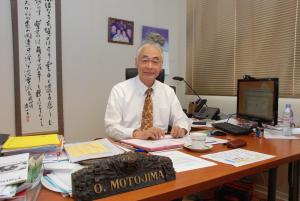Comprehending the disaster's impact
27 May 2011
-
Osamu Motojima, ITER Director-General
It has now been ten weeks since one of the four most severe earthquakes registered in the Earth's history hit the east coast of Japan. Our hearts are with the people who lost their homes and their belongings or—worse—their relatives and friends. While the country is getting back on its feet and dealing as best as possible with the devastation, at the ITER Organization we are trying to grasp the impact that the earthquake will have on the project's schedule.
Early May, Deputy Director-General Remmelt Haange led a fact-finding delegation to Japan to better understand and validate the damages done to the facilities that conduct important tests for ITER and also to visit a company that is likely to manufacture ITER components on behalf of the Japanese Domestic Agency. At the Domestic Agency located in Naka, the shockwave was registered with a force of 950 gal (cm/s2). Some of the buildings' structures were damaged—in certain cases severely. Access of personnel to the superconductor research facility and the neutral beam test building, for example, has been prohibited in order to avoid further disaster resulting from frequent aftershocks. For this reason, the status of the test facilities inside the buildings could not be verified.
These facts—together with the report given to us by our Japanese colleagues during the recent meeting of the Management Advisory Committee (MAC)—stipulate some urgent and drastic decision-making in order to avoid unacceptable delays to the project's schedule. I have therefore proposed to MAC to set up a Special Task Group made up of representatives from the ITER Organization and the seven Domestic Agencies, under my leadership, to develop a strategic plan for a new resource-loaded schedule which we plan to deliver in time for the ITER Council meeting in November this year. This proposal shall minimize schedule delays originating from the natural disaster in Japan, while respecting the capped construction costs of ITER. This may mean that we have to address selective deferral, where appropriate, and perhaps even de-scoping. But it is yet too early to speculate ... we will have to wait for the facts and findings to be elaborated by the Special Task Group.


